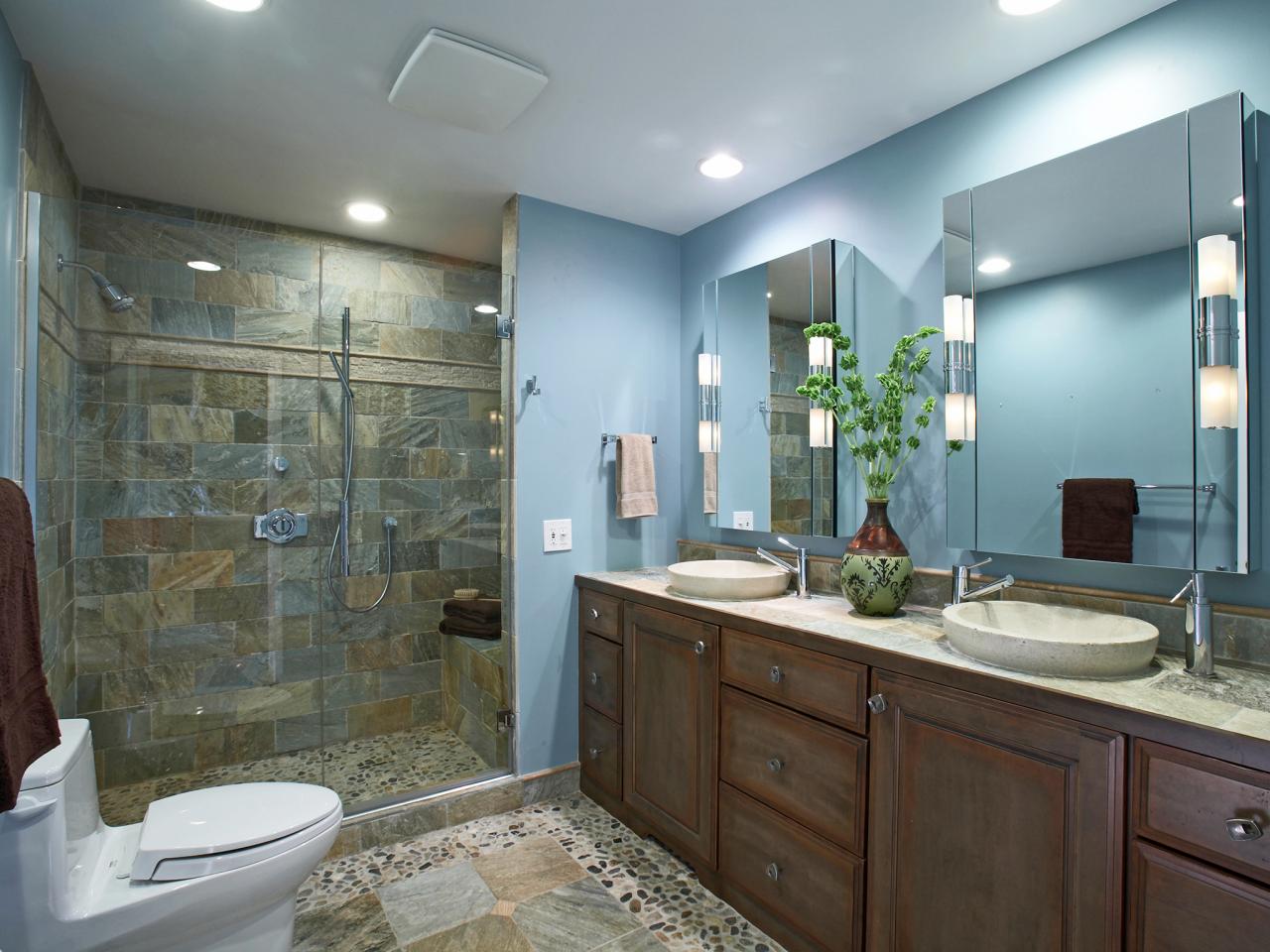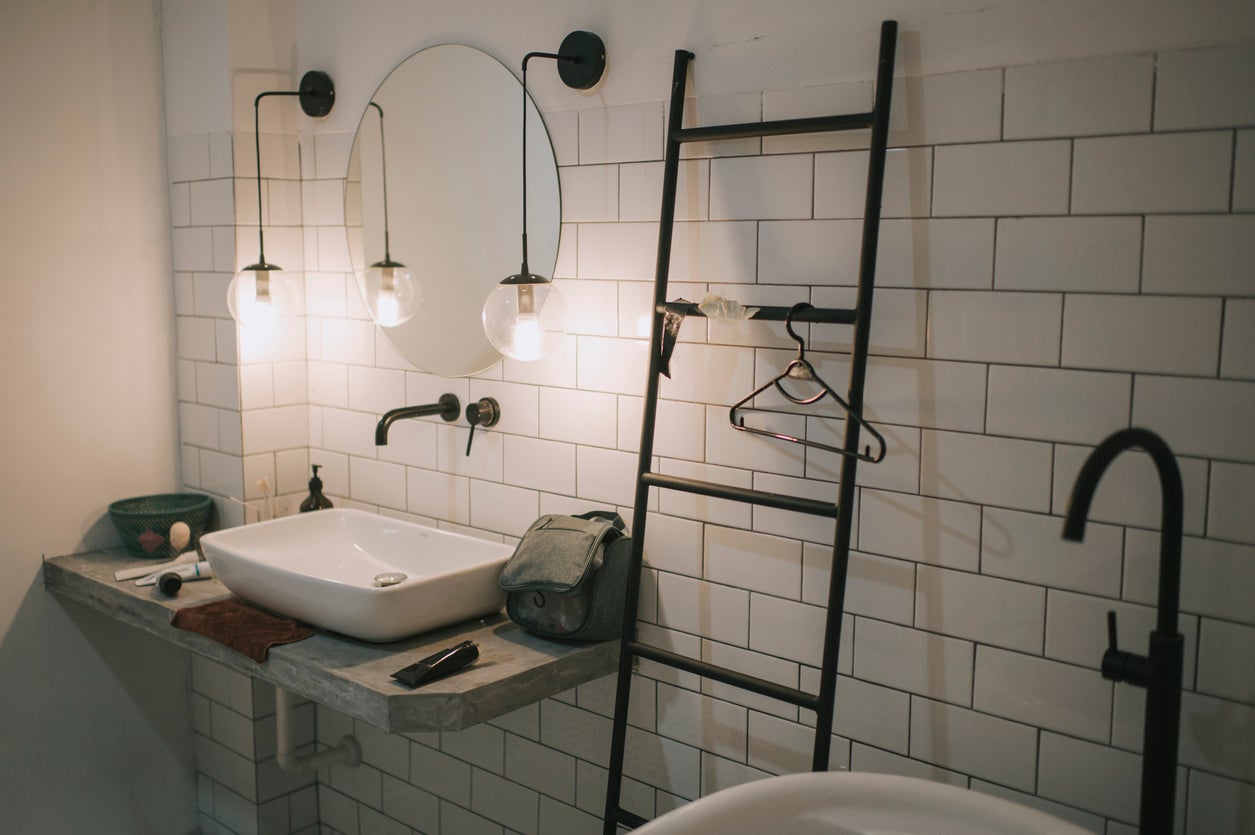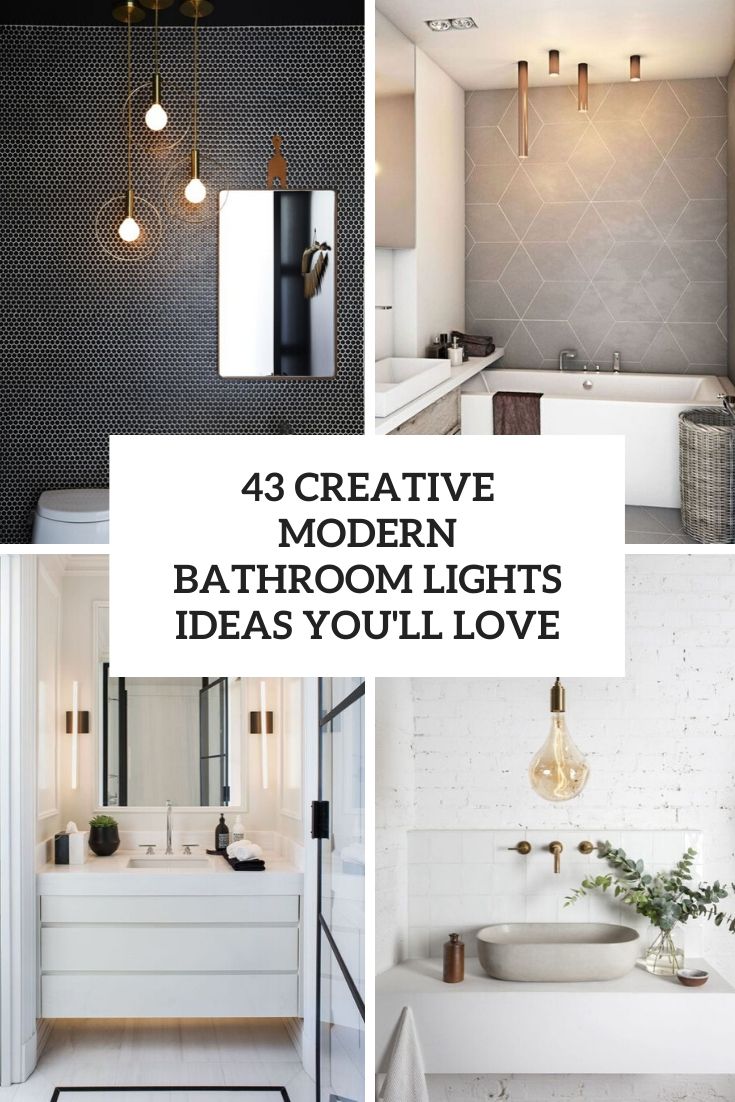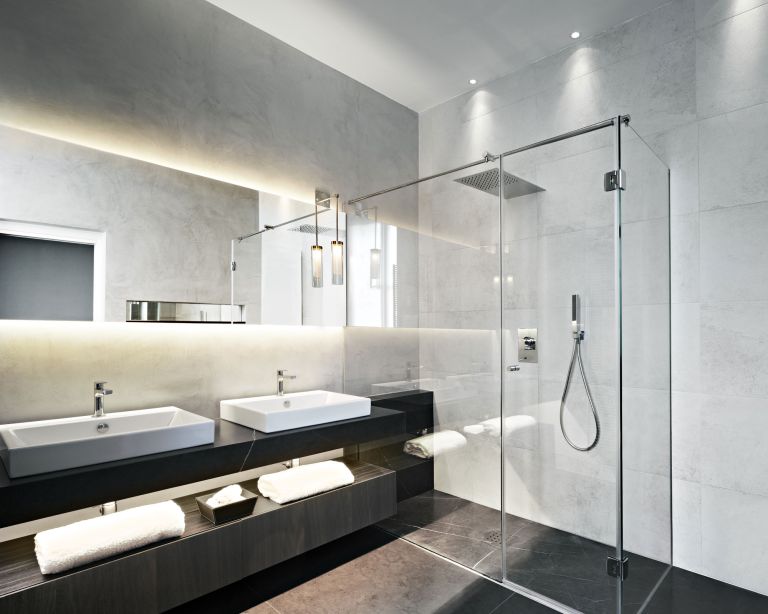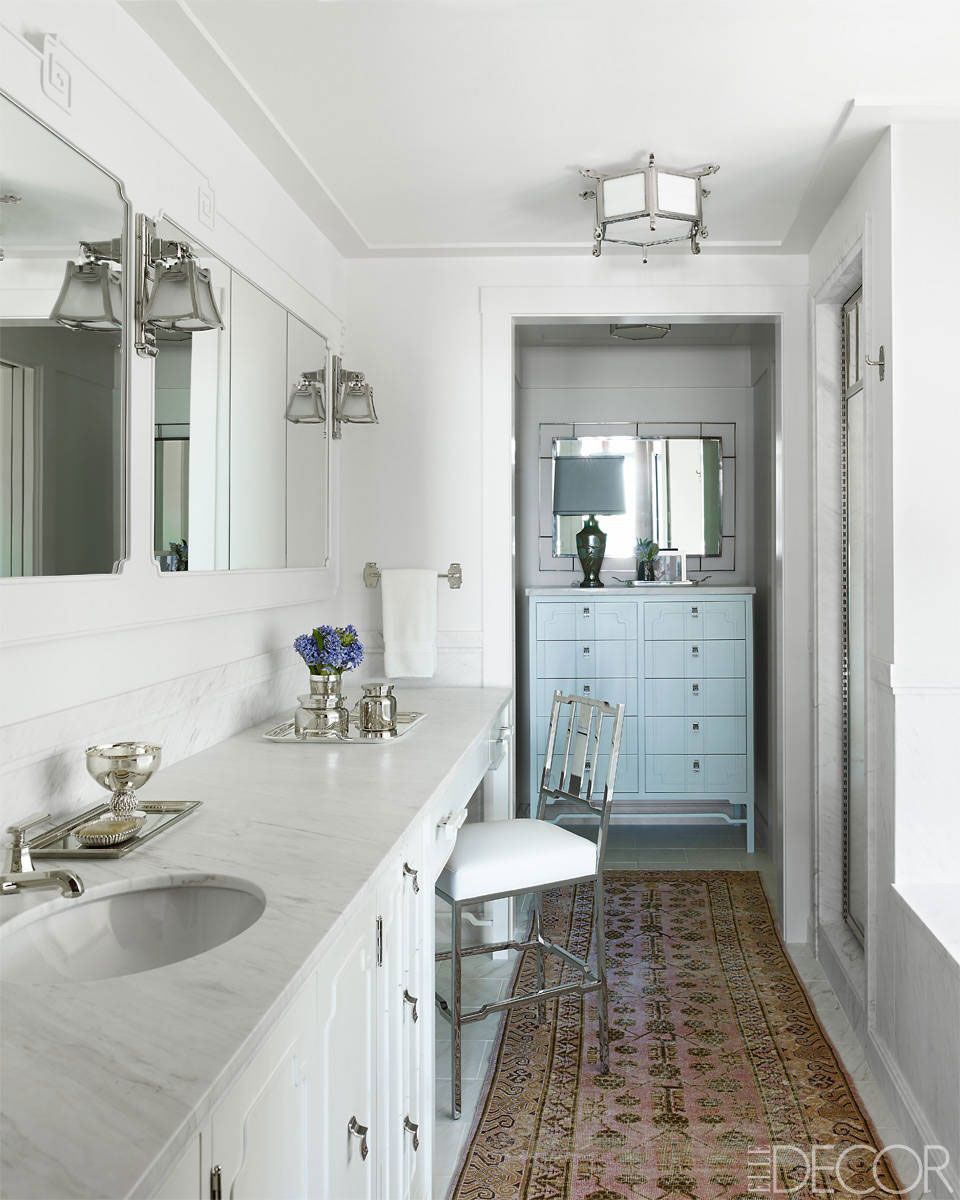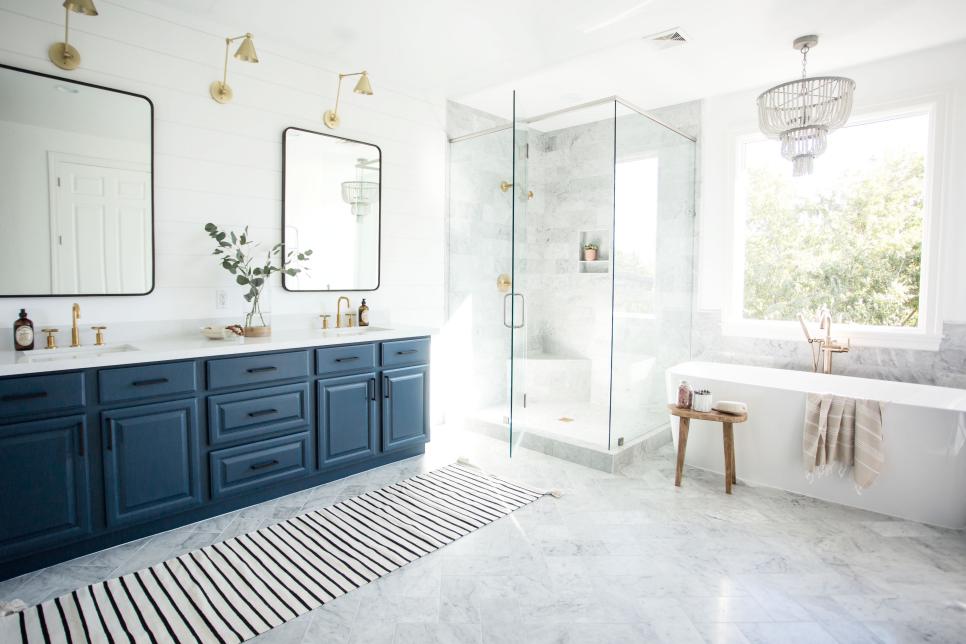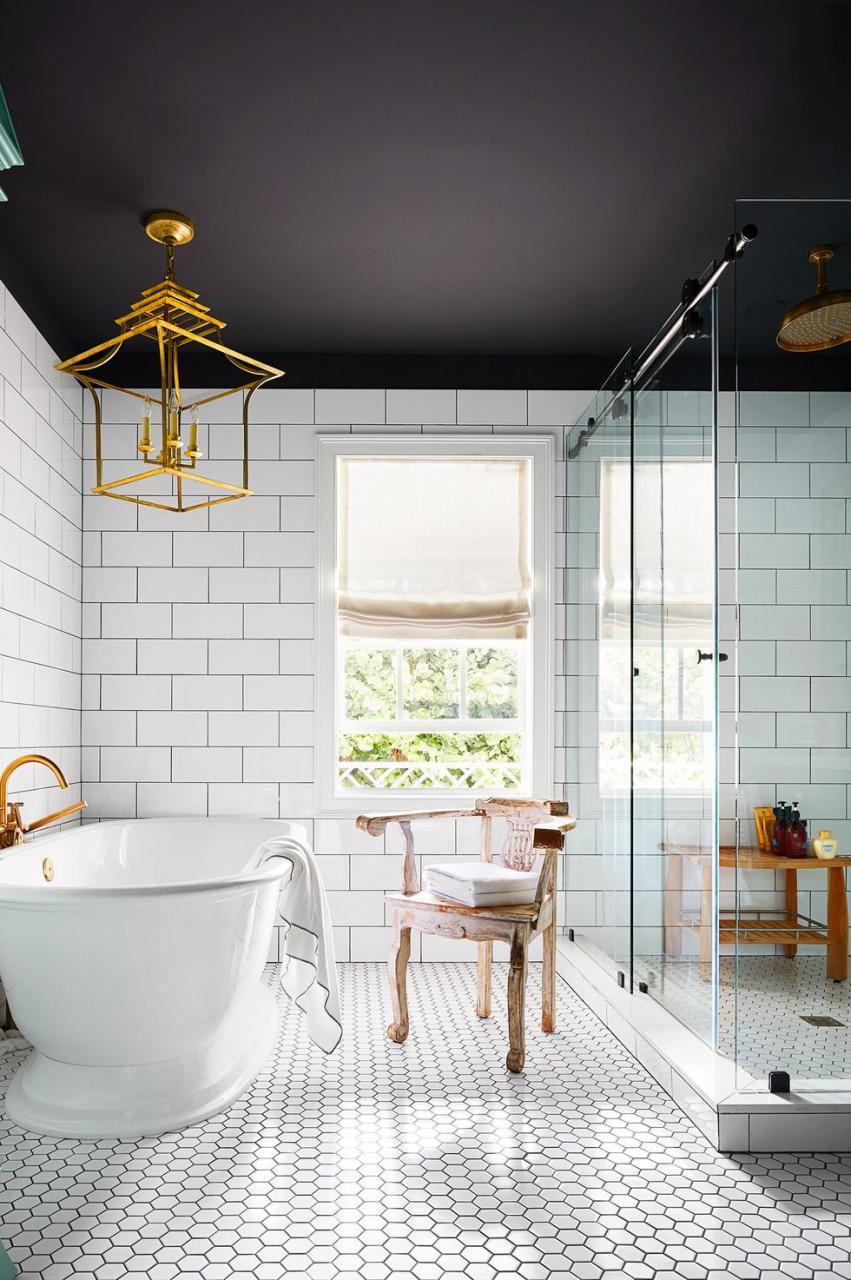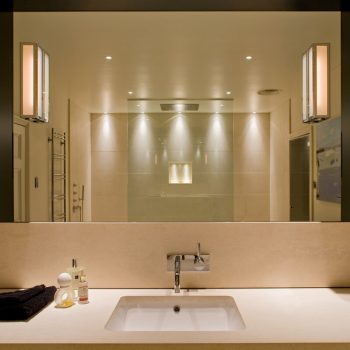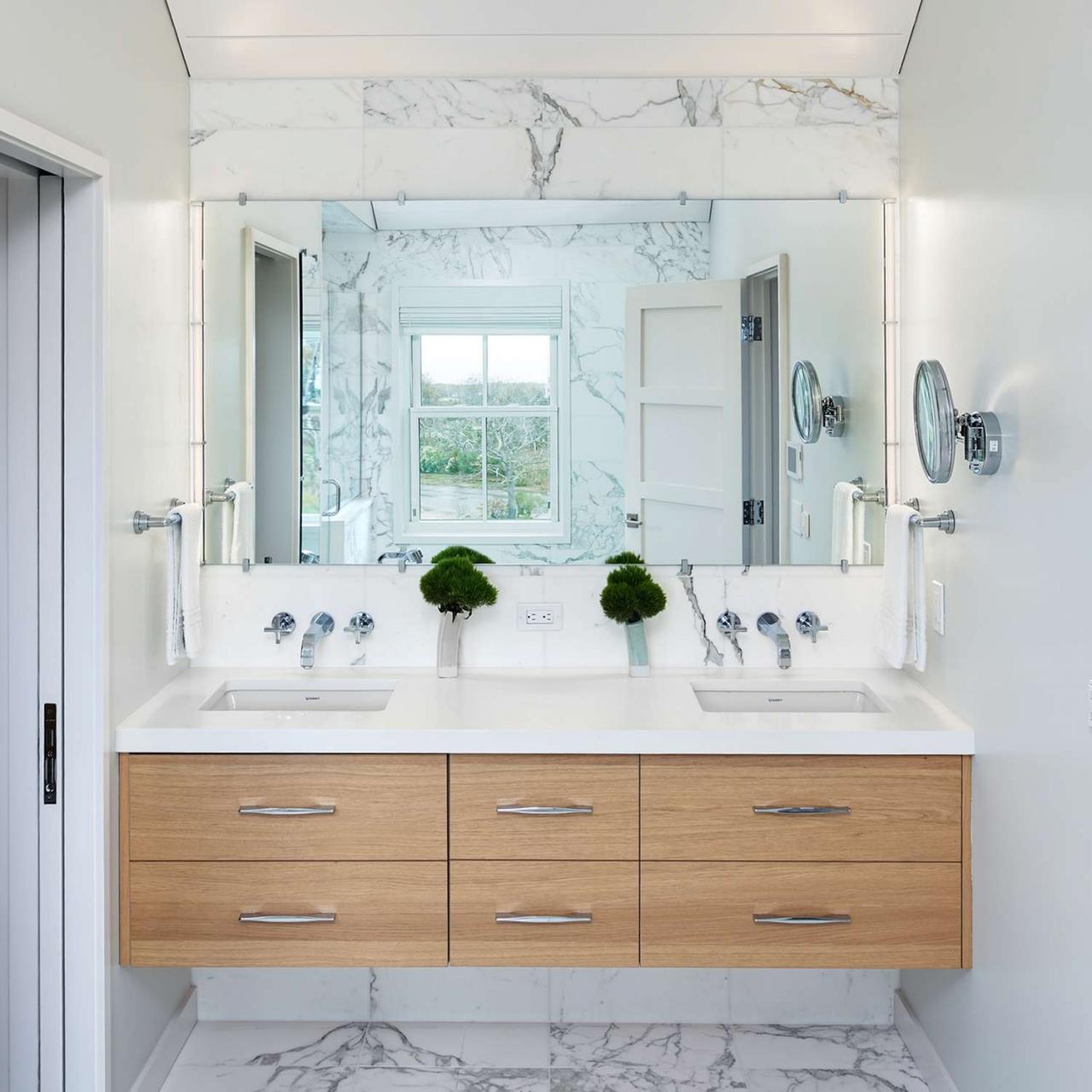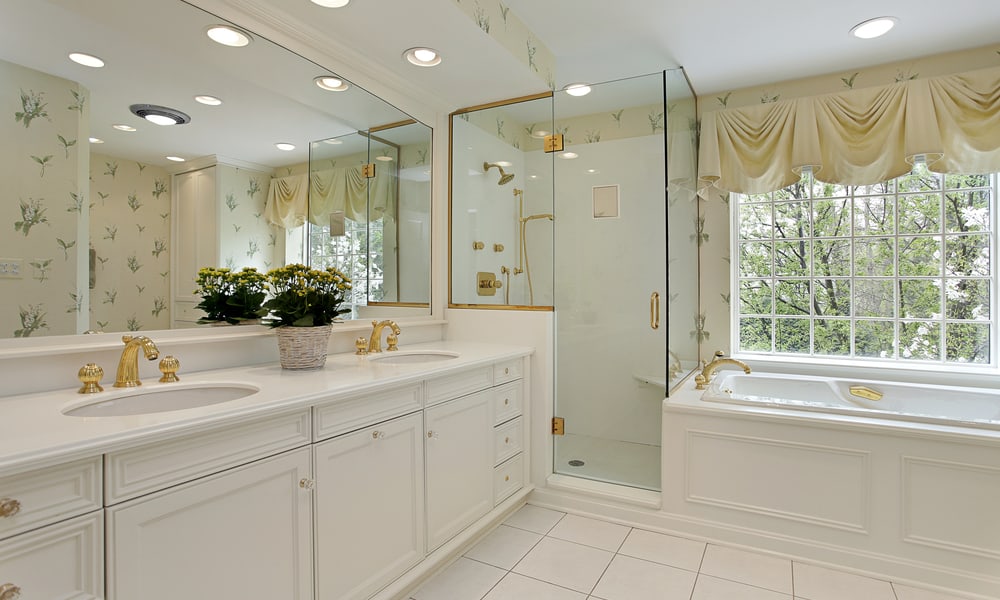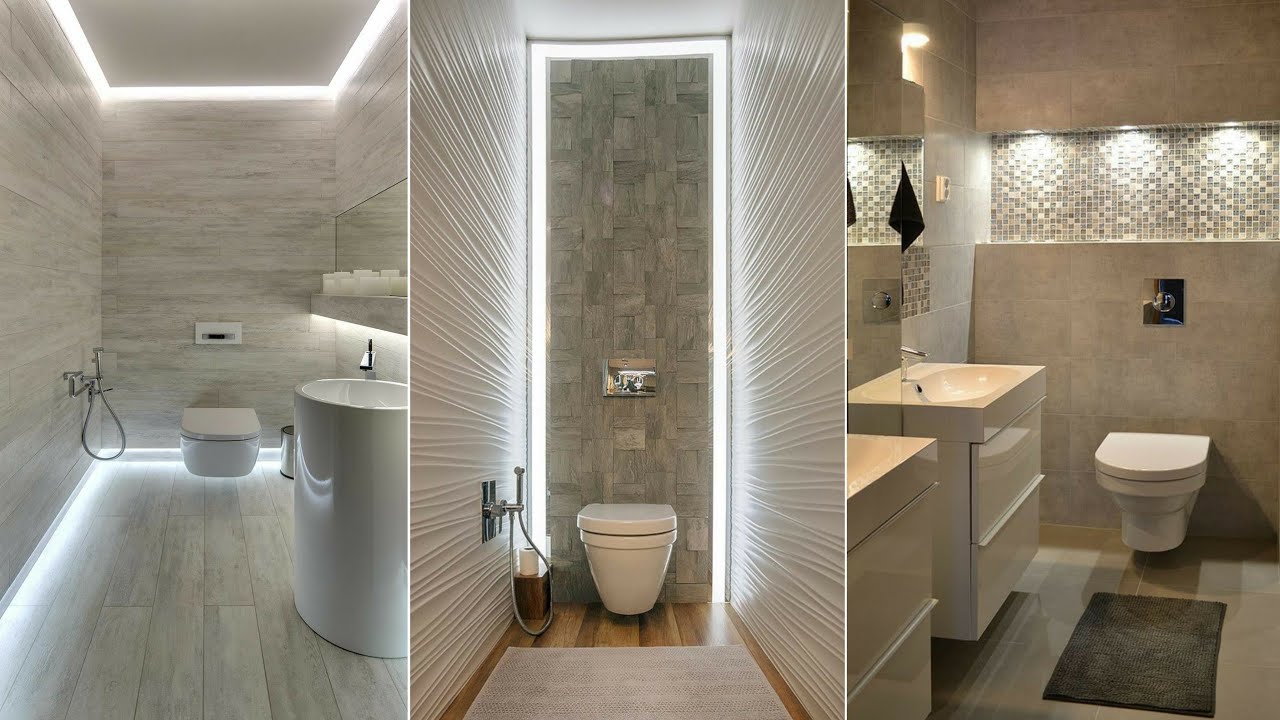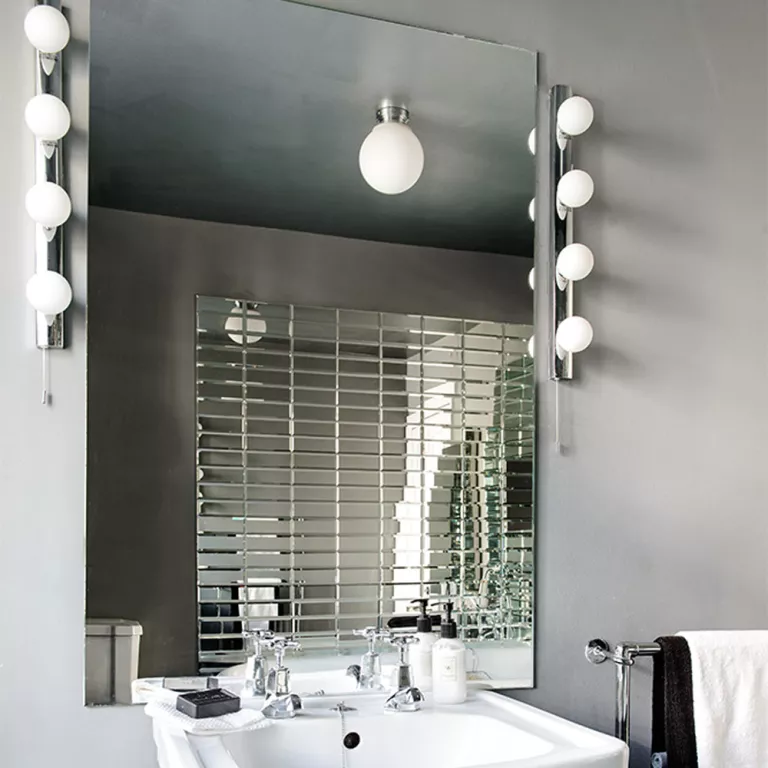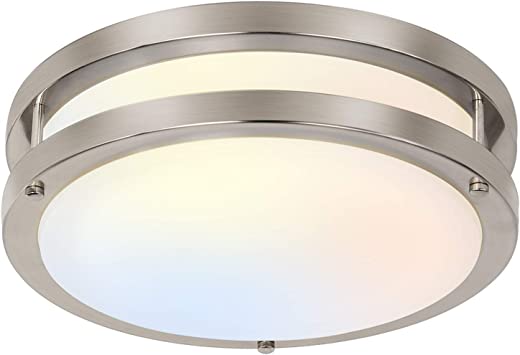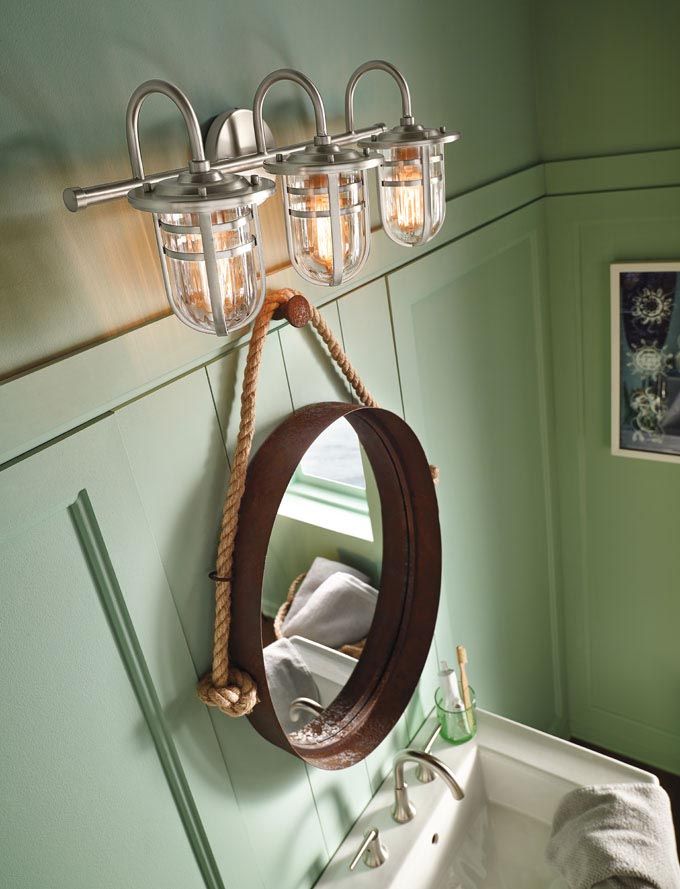Understanding the Different Types of Bathroom Lighting
When designing or updating a bathroom, lighting is one of the most crucial elements to consider. It’s not just about the fixtures themselves, but how different types of lighting work together to create a functional and inviting space. To get the best out of your bathroom lighting, it’s essential to understand the three main types: ambient, task, and accent lighting. Each serves a unique purpose and, when combined effectively, can transform your bathroom into a space that is both beautiful and practical.
- Ambient Lighting
Ambient lighting is the primary source of light in any room, including the bathroom. It’s what fills the space with a general level of illumination and is usually achieved through ceiling fixtures, such as recessed lights or flush mounts. In the bathroom, ambient lighting helps to provide a base level of visibility, ensuring that the space is well-lit and safe to navigate. However, relying solely on ambient lighting can make a bathroom feel flat and uninviting, which is why it’s crucial to layer it with other types of lighting. - Task Lighting
Task lighting is all about functionality. It focuses light on specific areas where activities such as shaving, applying makeup, or brushing teeth are performed. In the bathroom, the most common form of task lighting is around the vanity area. The goal is to eliminate shadows and provide bright, even lighting that allows for detailed grooming tasks. This type of lighting is typically provided by wall-mounted sconces or LED strip lights positioned on either side of the mirror, ensuring that the face is evenly lit from both sides. - Accent Lighting
Accent lighting is used to highlight particular features within the bathroom, such as architectural details, artwork, or a beautiful tile backsplash. It adds depth and dimension to the space by drawing attention to these focal points. Accent lighting is typically softer and less intense than task lighting, often achieved through the use of directional spotlights, LED strips, or even candles for a warm, inviting glow. While accent lighting is more decorative, it plays a vital role in creating a layered lighting design that makes the bathroom feel well-balanced and aesthetically pleasing. - Decorative Lighting
Decorative lighting fixtures, like chandeliers, pendant lights, or unique wall sconces, serve as a design element in the bathroom. While they do provide some level of illumination, their primary function is to add character and style to the space. Decorative lighting can be a great way to inject personality into your bathroom, reflecting your taste and the overall design theme of your home. However, these fixtures should complement, not replace, the other types of lighting in the room. - Natural Lighting
Though not a type of artificial lighting, natural light is a critical component of a well-lit bathroom. Windows, skylights, and even frosted glass doors can flood a bathroom with daylight, making the space feel larger, airier, and more inviting. Natural light is particularly effective in bathrooms because it provides the most flattering illumination for skin tones. It’s also energy-efficient, reducing the need for artificial lighting during the day. When planning your bathroom lighting, consider how natural light interacts with your chosen fixtures and whether additional treatments, like sheer curtains or blinds, are needed to control its intensity. - Layering Light for the Best Effect
The key to great bathroom lighting is layering different types of light to create a space that is functional, flattering, and visually appealing. Start with a strong base of ambient lighting, then add task lighting where precision is needed, and finish with accent or decorative lighting to highlight features and add personality. This layered approach ensures that your bathroom is not only well-lit but also has the flexibility to adapt to different needs and moods, from bright and energetic in the morning to soft and relaxing in the evening.

Choosing the Right Light Fixtures for Your Bathroom
Selecting the right light fixtures for your bathroom can make all the difference in terms of both functionality and aesthetics. The ideal fixtures not only provide adequate illumination for everyday tasks but also enhance the overall design of the space. With so many options available, it can be overwhelming to decide which fixtures will work best in your bathroom. Here are some tips to help you choose the perfect lighting fixtures to suit your needs and style.
Consider Your Bathroom’s Size and Layout
The first step in choosing the right light fixtures is to assess the size and layout of your bathroom. A larger bathroom will require more lighting to ensure every corner is adequately illuminated, whereas a smaller bathroom may only need a few well-placed fixtures. Think about where you need the most light, such as above the vanity or in the shower area, and choose fixtures that provide sufficient coverage for these spaces. Recessed lights, for example, are great for evenly lighting a large bathroom, while wall sconces can add focused light to smaller areas.
Match Fixtures to Your Design Style
Your bathroom light fixtures should complement the overall design style of the room. If you have a modern bathroom with clean lines and minimalistic features, sleek, contemporary fixtures will work best. For a more traditional or rustic bathroom, consider fixtures with more ornate details or vintage-inspired finishes. The key is to choose fixtures that enhance the aesthetic you’re aiming for while still providing the necessary illumination.
Think About Functionality and Placement
Functionality is crucial when it comes to bathroom lighting. Consider how each fixture will be used and where it will be placed. For example, vanity lights should be positioned at eye level on either side of the mirror to reduce shadows on the face. Ceiling lights or recessed lights are ideal for providing general illumination, while a chandelier or pendant can add a decorative touch without compromising functionality. Always think about the specific needs of your bathroom when selecting fixtures.
Choose the Right Bulbs and Light Temperature
The type of bulbs you use in your bathroom fixtures can significantly affect the quality of light in the space. LED bulbs are a popular choice because they are energy-efficient and have a long lifespan. When selecting bulbs, consider the color temperature, which is measured in Kelvins (K). For bathrooms, a color temperature between 3000K and 4000K is recommended, as it provides a natural, daylight-like glow that is ideal for grooming and applying makeup.
Safety Considerations
Safety is another important factor when choosing bathroom light fixtures. Bathrooms are considered wet locations, so it’s essential to select fixtures that are rated for these environments. Look for fixtures with a UL (Underwriters Laboratories) damp or wet rating, which indicates that they are suitable for use in areas with high moisture levels. Additionally, ensure that all electrical work is done by a licensed professional to prevent potential hazards.
Mixing and Matching Fixtures
Don’t be afraid to mix and match different types of fixtures to create a dynamic and layered lighting scheme. Combining a central ceiling fixture with wall sconces and recessed lights, for example, can provide a balanced mix of ambient, task, and accent lighting. Just be sure that the fixtures you choose work together harmoniously in terms of style, finish, and light output to create a cohesive look.
How to Optimize Natural Light in Your Bathroom
Maximizing natural light in your bathroom not only enhances the overall look and feel of the space but also has practical benefits like reducing the need for artificial lighting and creating a more inviting atmosphere. Here are some strategies to help you make the most of the natural light in your bathroom.
Use Light, Reflective Colors
One of the simplest ways to optimize natural light in your bathroom is to use light, reflective colors on the walls, ceiling, and even the floors. Light colors, especially whites and pastels, reflect natural light better than dark colors, making the space feel brighter and more open. You can also consider glossy finishes for your paint or tiles, as they will reflect even more light and enhance the overall brightness of the room.
Install Large Windows or Skylights
If you’re in the process of remodeling or designing a new bathroom, consider installing large windows or skylights to maximize natural light. Windows that face south or west will receive the most sunlight throughout the day. Skylights are particularly effective in bathrooms with limited wall space or privacy concerns, as they provide ample light without compromising privacy. Be sure to choose energy-efficient windows and skylights to minimize heat loss and gain.
Choose Sheer or Light-Filtering Window Treatments
The type of window treatments you use can significantly impact the amount of natural light that enters your bathroom. Heavy drapes or dark blinds can block out light, making the space feel smaller and darker. Instead, opt for sheer curtains or light-filtering shades that allow sunlight to pass through while still providing privacy. These types of window treatments can soften the light and create a warm, inviting ambiance.
Use Mirrors Strategically
Mirrors are an excellent tool for optimizing natural light in any space, especially in the bathroom. By reflecting light, mirrors can double the amount of natural illumination in the room. Place a large mirror opposite a window to bounce light around the room, or use multiple smaller mirrors to create a similar effect. In addition to enhancing light, mirrors can also make the space feel larger and more open.
Keep Windows Clean and Unobstructed
Dirty windows or windows blocked by furniture can significantly reduce the amount of natural light that enters your bathroom. Make sure to clean your windows regularly, both inside and out, to keep them clear of dirt, dust, and grime. Additionally, avoid placing large objects or heavy furniture in front of windows, as this can obstruct light and make the space feel more closed in.
Incorporate Glass Elements
Glass elements, such as shower doors, partitions, or shelves, can help to maximize the flow of natural light in your bathroom. Unlike solid walls or opaque curtains, glass allows light to pass through, reducing shadows and creating a brighter, more open feel. Clear or frosted glass can be used to maintain privacy while still enhancing the overall brightness of the space.
Task Lighting: Essential Tips for Vanities and Mirrors
Task lighting is one of the most important aspects of bathroom lighting, especially around vanities and mirrors. This type of lighting is essential for activities like shaving, applying makeup, and grooming, where clear, shadow-free illumination is required. Here are some essential tips for achieving effective task lighting in your bathroom.
Position Lighting at Eye Level
For optimal task lighting around the vanity, fixtures should be positioned at eye level on either side of the mirror. This placement ensures that light is evenly distributed across the face, minimizing shadows under the eyes, nose, and chin. Wall-mounted sconces are an excellent choice for this purpose, as they provide focused light right where you need it most.
Use the Right Bulb Brightness and Color Temperature
The brightness and color temperature of your bulbs are crucial for effective task lighting. For bathroom vanities, choose bulbs that emit between 60 and 100 watts of light, or around 800 to 1,600 lumens. The color temperature should be between 3000K and 4000K, which provides a neutral, daylight-like quality that is ideal for tasks like applying makeup or shaving. This range ensures that colors appear true to life, which is particularly important for grooming.
Avoid Downlights Directly Overhead
While overhead lighting can provide general illumination, downlights positioned directly above the mirror can cast unflattering shadows on the face. To avoid this, focus on placing lights on either side of the mirror at eye level, as mentioned earlier. If you do need to use overhead lighting, consider placing it slightly in front of the mirror or opt for fixtures with diffusers that soften the light.
Consider Adjustable Fixtures
Adjustable fixtures can offer more flexibility in directing light exactly where you need it. Swing-arm sconces or adjustable wall lights allow you to customize the direction and angle of the light, which can be especially useful for grooming tasks. These types of fixtures provide versatility, making it easier to achieve the ideal lighting for your needs.
Layer with Ambient Lighting
While task lighting is essential for detailed work around the vanity, it should be complemented by ambient lighting to create a balanced and well-lit bathroom. A combination of recessed ceiling lights, pendant lights, or a flush mount fixture can provide general illumination, ensuring that the entire space is evenly lit. This layering effect reduces the harshness of task lighting and creates a more comfortable environment.
Opt for Dimmable Fixtures
Dimmable fixtures provide greater control over the lighting in your bathroom, allowing you to adjust the brightness according to your needs and the time of day. For example, you may want bright, intense lighting in the morning for grooming, but a softer, more relaxing light in the evening. Dimmable LED bulbs or fixtures with integrated dimming capabilities can help create a versatile and adaptable lighting scheme.
Ambient Lighting Ideas to Set the Mood in Your Bathroom
Ambient lighting sets the overall tone of your bathroom, providing a base level of illumination that is both functional and atmospheric. Whether you’re getting ready in the morning or unwinding with a bath in the evening, the right ambient lighting can make all the difference. Here are some ideas to help you create the perfect mood in your bathroom with ambient lighting.
Use Recessed Lighting for a Clean, Modern Look
Recessed lighting, also known as can lights, is a popular choice for ambient lighting in bathrooms because it provides a clean, uncluttered look. These fixtures are installed in the ceiling, offering a soft, even glow that fills the entire room. Recessed lights are ideal for creating a modern, streamlined aesthetic and can be positioned strategically to highlight key areas of the bathroom, such as the vanity or shower.
Install a Statement Pendant Light or Chandelier
If you want to make a bold statement with your bathroom lighting, consider installing a pendant light or chandelier. These fixtures not only provide ample ambient light but also serve as a stunning focal point that can enhance the overall design of the space. Choose a fixture that complements the style of your bathroom, whether it’s a sleek, contemporary pendant or an ornate, traditional chandelier.
Incorporate Cove Lighting for a Soft, Indirect Glow
Cove lighting is a subtle and sophisticated way to add ambient light to your bathroom. This type of lighting is installed in recessed areas, such as the tops of cabinets or the perimeter of the ceiling, creating a soft, indirect glow that bounces off the walls and ceiling. Cove lighting is perfect for creating a warm, inviting atmosphere, making it an excellent choice for bathrooms designed for relaxation.
Use Wall Sconces for a Warm, Inviting Atmosphere
Wall sconces are versatile fixtures that can provide both task and ambient lighting, depending on their placement and design. When used as ambient lighting, sconces should be placed at a higher level, such as above a mirror or along the walls, to cast a warm, diffused light throughout the room. This type of lighting is ideal for creating a cozy, welcoming ambiance, especially in smaller bathrooms.
Install Dimmers for Adjustable Lighting Levels
Installing dimmer switches for your ambient lighting fixtures allows you to adjust the brightness according to your needs and mood. This flexibility is particularly useful in bathrooms, where you may want bright, energizing light in the morning and a softer, more relaxing glow in the evening. Dimmers also help reduce energy consumption and extend the life of your bulbs, making them a practical addition to any bathroom lighting scheme.
Consider Smart Lighting Solutions
Smart lighting systems offer advanced control over your bathroom’s ambient lighting, allowing you to adjust brightness, color temperature, and even color through a smartphone app or voice commands. With smart lighting, you can create preset lighting scenes for different times of day or activities, such as “Morning Routine” or “Relaxing Bath.” This level of customization can enhance the functionality and comfort of your bathroom, making it a more enjoyable space to be in.
Accent Lighting: Highlighting Design Features and Décor
Accent lighting is all about drawing attention to specific elements within your bathroom, such as architectural details, artwork, or unique design features. It adds depth and dimension to the space, creating visual interest and enhancing the overall ambiance. Here’s how you can use accent lighting to highlight your bathroom’s best features.
Highlight Architectural Features with Spotlights
Spotlights are an excellent choice for accent lighting because they provide focused illumination that can be directed at specific features. Use spotlights to highlight architectural elements such as a textured wall, a niche, or a statement piece like a freestanding tub. The directional light draws the eye to these features, adding drama and enhancing the overall design of the bathroom.
Use LED Strip Lights for a Modern Touch
LED strip lights are a versatile option for accent lighting and can be used in a variety of ways to enhance your bathroom. Place them under cabinets, along the edges of mirrors, or around the perimeter of the ceiling to create a subtle, glowing effect that highlights the contours of the space. LED strips are available in various colors and can even be controlled via a remote or smart device, allowing you to change the ambiance with a simple touch.
Incorporate Backlighting for a Soft, Glowing Effect
Backlighting is a technique that involves placing a light source behind an object, such as a mirror or a piece of artwork, to create a soft, glowing halo effect. This type of lighting can add a touch of elegance and sophistication to your bathroom, making it feel more luxurious. Backlit mirrors are particularly popular in modern bathrooms, providing both functional task lighting and a stylish accent.
Use Recessed Shelf Lighting to Showcase Décor
If you have open shelving or niches in your bathroom, consider adding recessed lighting to these areas to showcase decorative items, such as candles, plants, or sculptures. This type of accent lighting creates a cozy, inviting atmosphere and allows you to highlight your favorite pieces. Recessed shelf lighting can be particularly effective in smaller bathrooms, where it adds visual interest without taking up valuable space.
Accentuate Textures with Uplighting or Downlighting
Uplighting and downlighting are techniques that can be used to accentuate textures and create visual interest in your bathroom. Uplighting involves placing fixtures at floor level to cast light upwards, highlighting textured walls, stone features, or unique ceilings. Downlighting, on the other hand, directs light downward from above, emphasizing floor textures or a feature wall. Both techniques add drama and depth to the space, making it feel more dynamic and visually appealing.
Create a Relaxing Atmosphere with Candlelight
While not a permanent lighting solution, candles can be used as accent lighting to create a relaxing and spa-like atmosphere in your bathroom. Place candles around the bathtub, on a shelf, or in a cluster on the countertop to add a warm, flickering glow that enhances the sense of tranquility. For safety, consider using flameless LED candles that mimic the look and feel of real candles without the risk of an open flame.
Energy-Efficient Bathroom Lighting Options for Sustainability
In today’s world, energy efficiency is more important than ever. Choosing energy-efficient lighting options for your bathroom can help reduce your environmental footprint, lower your energy bills, and provide a more sustainable solution for your home. Here are some energy-efficient lighting options to consider for your bathroom.
Switch to LED Bulbs
LED (Light Emitting Diode) bulbs are one of the most energy-efficient lighting options available today. They use up to 80% less energy than traditional incandescent bulbs and last up to 25 times longer, making them a cost-effective and environmentally friendly choice. LED bulbs also produce less heat, reducing the load on your air conditioning and further enhancing their energy efficiency.
Choose Fluorescent Lighting
Compact fluorescent lamps (CFLs) are another energy-efficient option for bathroom lighting. CFLs use about 75% less energy than incandescent bulbs and have a longer lifespan. They provide bright, even illumination and are available in a range of color temperatures to suit different lighting needs. While they are less common in new installations compared to LEDs, CFLs are still a viable option for energy-conscious homeowners.
Opt for Energy-Efficient Fixtures
When selecting light fixtures for your bathroom, look for options that are designed with energy efficiency in mind. Fixtures with integrated LED technology or those that are compatible with dimmable LED bulbs can help reduce overall energy consumption. Additionally, choosing fixtures made from recycled or sustainable materials can further enhance the eco-friendliness of your bathroom lighting.
Install Motion Sensors and Timers
Motion sensors and timers are practical additions to bathroom lighting that help conserve energy by ensuring lights are only on when needed. Motion sensors can automatically turn on lights when someone enters the room and turn them off when the room is vacant. Timers can be set to turn lights off after a certain period, reducing the chances of leaving lights on unnecessarily.
Utilize Daylight Harvesting
Daylight harvesting involves using natural light to reduce the need for artificial lighting. By incorporating skylights, large windows, or light tubes, you can maximize the amount of natural light in your bathroom, minimizing reliance on electric lights. Additionally, installing window treatments that allow for adjustable light levels can help manage the amount of daylight entering the space.
Consider Smart Lighting Controls
Smart lighting controls offer advanced features that can enhance the energy efficiency of your bathroom lighting. Smart bulbs and fixtures can be controlled via smartphone apps, allowing you to adjust brightness levels, set schedules, and even monitor energy usage. With smart lighting, you can create lighting scenes that automatically adjust based on time of day or occupancy, helping to reduce energy consumption.
Chic Bathroom Lighting Ideas – Flattering Light for Bathrooms
High-end, Inspirational bathroom light ideas
Bathroom Lighting Ideas for Small Bathrooms
Different Types of Bathroom Light Fixtures
Bathroom Lighting Ideas – Shower Light Ideas
Small bathroom lighting ideas – LED recessed lights for bathroom decoration
Bathroom lighting ideas – ways to light bathrooms safely
Related Posts:
